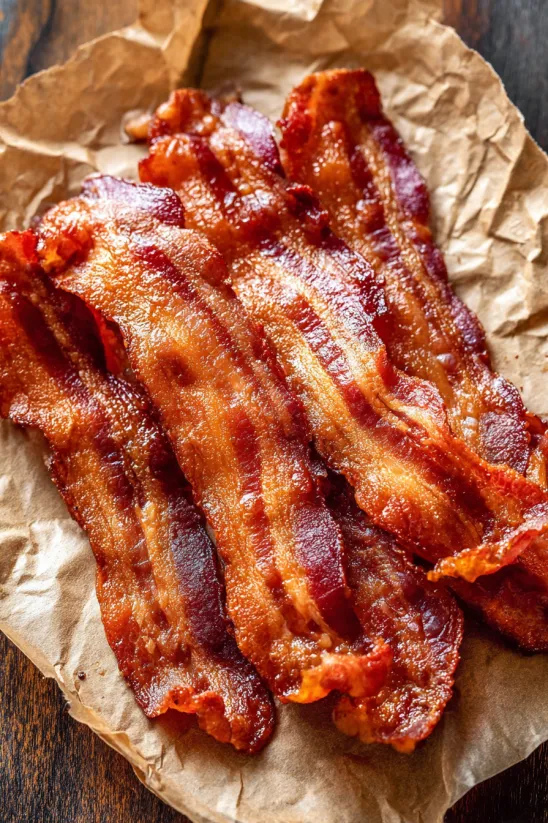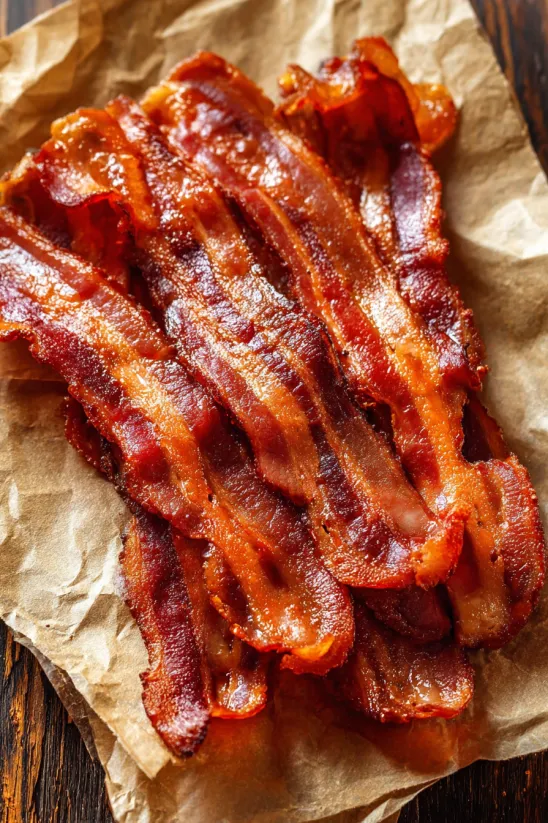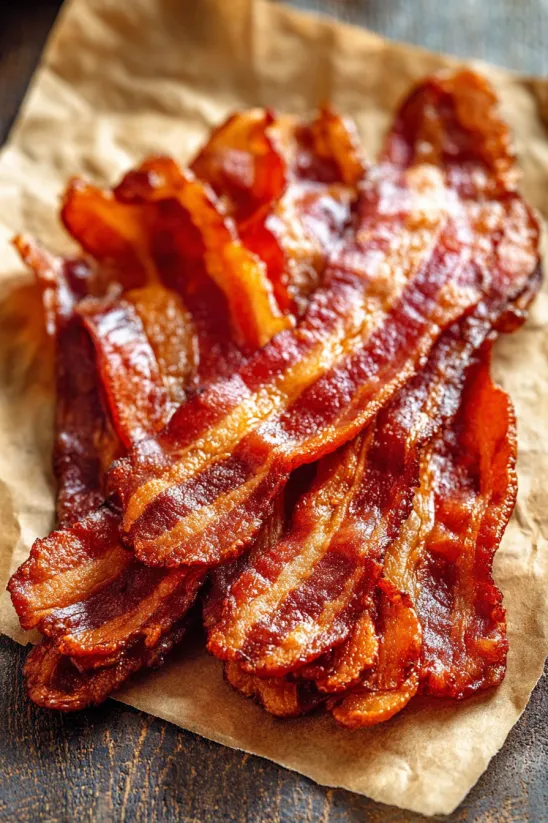 Bookmark
Bookmark
Forget stovetop splatter forever once you know how to cook bacon in the oven. Whether you lean chewy or crave crunch, the oven guarantees evenly cooked, hands-off bacon with just the texture you want. I have made giant pans of perfectly flat bacon for brunches and breakfasts and it truly saves time and cleanup every single time.
I started making bacon this way for holiday mornings when the kitchen was already busy and now my family will not let me make it any other way.
Ingredients
- Bacon strips: look for center cut if you want less fat and more even cooking thick cut works well too
- Sheet pan: opt for a sturdy rimmed pan to catch all the fat and make cleanup easier
- Wire rack: optional for crispier results choose one that fits snugly in your pan and has a nonstick coating
- Parchment paper or foil: prevents sticking and speeds up cleanup quality parchment stands up better to heat
- Paper towels for draining: use thick and absorbent towels for best results especially if you want extra crispy bacon
Step-by-Step Instructions
- Preheat the Oven:
- Set your oven to 400 degrees Fahrenheit. Let it come to full temperature for even cooking. Do not rush this step as an accurate oven temp is essential for the best bacon texture.
- Prep the Baking Sheet:
- Line your sheet pan with parchment or foil extending it up the sides for easy cleanup. Lay a wire rack over the pan if using. Make sure the rack is stable and does not tip.
- Arrange the Bacon:
- Lay bacon strips out in a single layer. Each piece should sit flat without overlapping to promote even cooking. If the bacon is thicker the pieces can touch slightly but do not let them stack.
- Bake the Bacon:
- Place the pan in the middle rack of the oven. For wire rack bacon bake for 15 to 21 minutes until deeply golden and crispy. For bacon directly on the pan check at 13 minutes as it may cook faster and will be chewier. The exact time depends on your oven and the thickness of the bacon so keep an eye on it toward the end.
- Drain the Bacon:
- Once done carefully transfer bacon to a plate lined with paper towels. This helps soak up excess grease and gives maximum crispness. If you love a richer bite you can skip draining and let the bacon rest a minute on a cooling rack instead.
 Bookmark
Bookmark
My personal favorite is center cut bacon since it fits perfectly on a standard sheet pan and turns out with the ideal balance of crisp and chew. Watching my kids snatch pieces right off the rack while tempted by the smell is a memory I will never forget.
Storage Tips
Let cooked bacon cool then store it in an airtight container in the fridge for up to five days. For longer storage freeze in a single layer on a tray then transfer to a freezer bag. Reheat gently in the oven or microwave to bring back the crispness.
Ingredient Substitutions
Turkey bacon or plant based bacon can be cooked in the oven with the same method but usually need less time. Keep a close watch so thinner strips do not overcook. You can also try peppered bacon or maple bacon for extra flavor with zero extra steps.
Serving Suggestions
Oven bacon is perfect for breakfast sandwiches in BLTs or chopped into salads and pasta. I love layering it with avocado and tomato or crumbling it into a loaded baked potato soup.
 Bookmark
Bookmark
Cultural Context
Bacon has long been a breakfast staple in American homes but this oven method gives you diner worthy results with modern ease. It is also the go to trick for prepping big batches for brunch or when serving a crowd during the holidays.
Common Recipe Questions
- → Why is oven baking better than frying bacon?
Oven baking means less mess, hands-off cooking, and evenly cooked strips. You can prepare more bacon at once and avoid hot grease splatters.
- → Should I use a wire rack or bake directly on the pan?
Using a wire rack yields crispier, less greasy bacon, while baking directly on a pan gives slightly chewier, richer slices. Try both to find your favorite.
- → How do I keep bacon flat while baking?
Laying bacon strips in a single layer and using a wire rack prevents curling, helping each piece stay flat and evenly cooked.
- → Is it necessary to drain bacon after baking?
Draining bacon on paper towels removes extra grease for crisper results, but you can skip this step for a more indulgent, rich texture.
- → Can I bake a large batch at once?
Yes, the oven easily handles a full tray, making it simple to prepare bacon for a group with minimal effort and time.
- → How do I dispose of bacon grease safely?
Let the grease solidify, then transfer to a heat-safe container or discard in the trash. Avoid pouring it down the drain.
